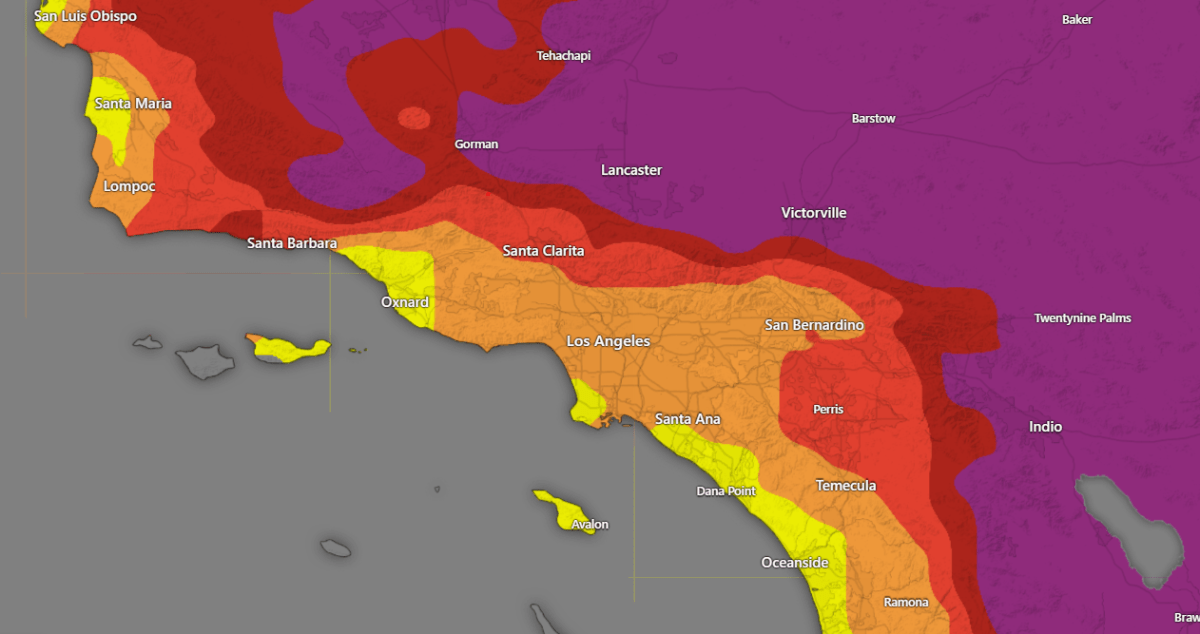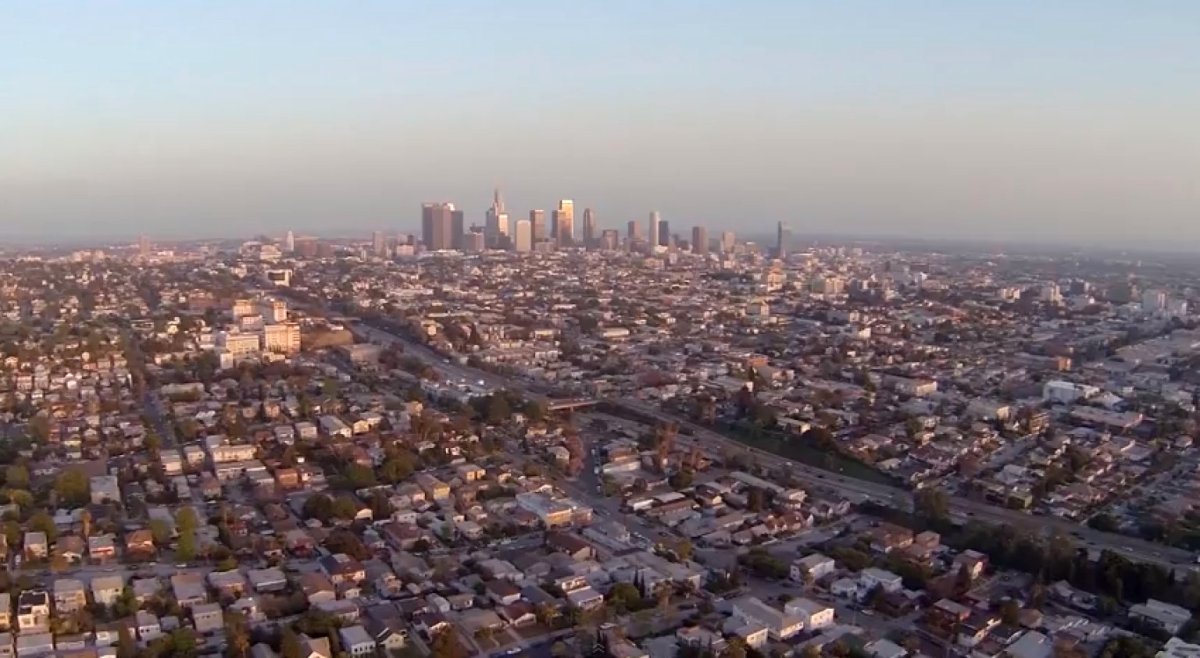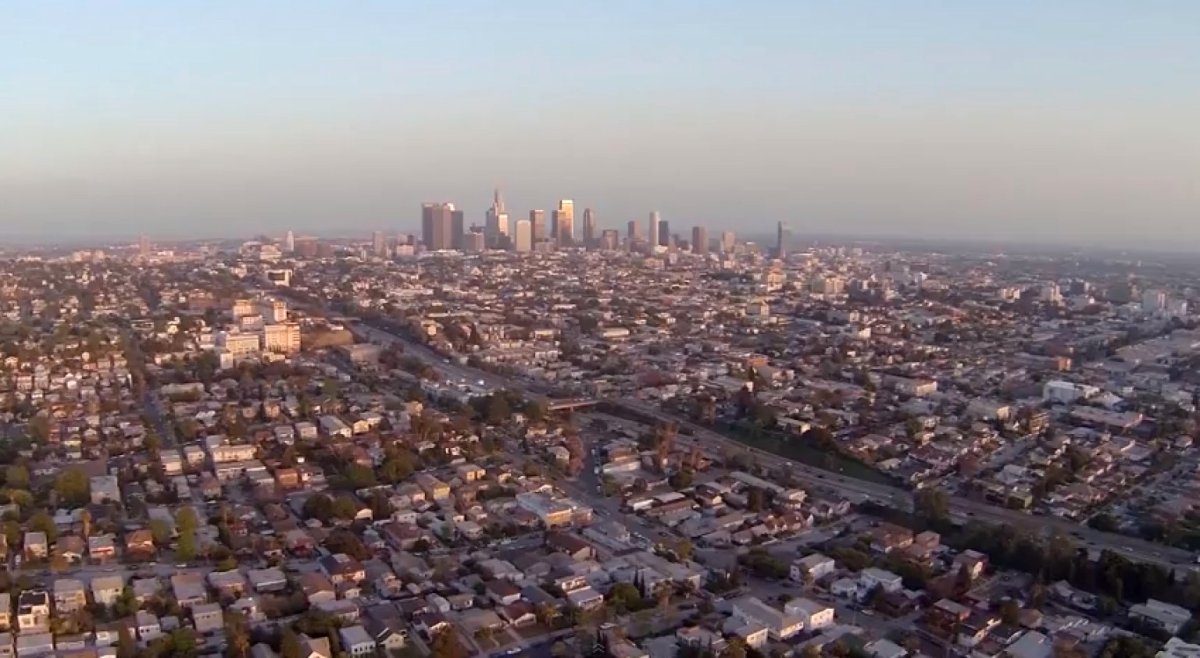Los Angeles fire drones are revolutionizing firefighting in the City of Angels. This isn’t just about fancy gadgets; it’s about saving lives and property more efficiently. We’ll explore the LAFD’s drone program, from its history and current capabilities to the technology behind these incredible machines and the future of aerial firefighting.
This exploration will cover the various types of drones used, their applications in different scenarios (wildfires, search and rescue, etc.), and the technological challenges and limitations involved. We’ll also delve into the legal and safety aspects, public concerns, and exciting future advancements on the horizon.
Los Angeles Fire Department Drone Program: Los Angeles Fire Drone
The Los Angeles Fire Department (LAFD) has integrated drone technology into its operations, significantly enhancing its capabilities in firefighting, search and rescue, and emergency response. This program’s evolution, technological aspects, and impact on public safety are detailed below.
LAFD Drone Program Overview

The LAFD’s drone program began with experimental deployments in the early 2010s, gradually expanding its fleet and operational capabilities. Today, the program boasts a diverse range of drones tailored to various firefighting scenarios. These drones are equipped with advanced sensors and communication systems, enabling real-time data acquisition and transmission during emergencies.
Current LAFD Drone Fleet Capabilities
The LAFD’s current drone fleet includes models capable of thermal imaging, high-resolution photography and videography, and extended flight times. These capabilities are crucial for situational awareness, search and rescue, and post-fire damage assessment. The department utilizes a mix of commercially available drones from manufacturers like DJI and Autel, selected for their reliability, performance, and suitability for the challenging conditions faced in Los Angeles.
LAFD Drone Specifications and Manufacturers
The LAFD utilizes a variety of drone models, each chosen for specific tasks. While exact model numbers and specifications may vary due to operational needs and ongoing upgrades, the department generally favors drones with robust build quality, long flight times, and versatile payload options.
| Drone Model | Payload Capacity (lbs) | Flight Time (minutes) | Sensor Types |
|---|---|---|---|
| Example Model A (DJI Matrice) | 2-3 | 30-40 | Visible light camera, Thermal camera, RTK GPS |
| Example Model B (Autel EVO) | 1-2 | 25-35 | Visible light camera, Thermal camera |
| Example Model C (Custom Built) | 4-5 | 45-60 | Visible light camera, Thermal camera, LiDAR |
Drone Applications in Firefighting
Drones have revolutionized firefighting in Los Angeles. Their applications range from pre-fire planning and situational awareness to post-fire damage assessment and search and rescue operations.
Situational Awareness During Wildfires
Drones provide real-time aerial views of wildfire progression, enabling firefighters to assess fire behavior, identify spread patterns, and make informed strategic decisions. This rapid assessment is crucial for resource allocation and deployment.
Search and Rescue Operations

Following a fire, drones equipped with thermal imaging cameras are invaluable in locating survivors trapped in debris or hidden from ground crews. The aerial perspective allows for faster and more efficient searches, improving chances of survival.
Thermal Imaging for Hotspot Detection
Thermal imaging drones pinpoint hidden hotspots within burned areas, allowing firefighters to address lingering embers and prevent re-ignition. This significantly reduces the risk of fire resurgence and improves overall fire suppression efforts.
Examples of Drone Use in LAFD Fire Suppression
In numerous incidents, LAFD drones have proven instrumental. For example, drones have been used to assess the extent of damage during the Woolsey Fire, providing crucial information for resource allocation. In other instances, drones have successfully located missing persons in the aftermath of wildfires.
Drone Deployment Decision-Making Flowchart
The decision to deploy drones is based on several factors, including the type of incident, weather conditions, and available resources. A standardized protocol ensures efficient and safe deployment.
Los Angeles Fire Department uses drones for swift emergency response, offering aerial views of fire zones for better strategy. However, the increasing use of drones highlights safety concerns, as seen in incidents like the one described in this article about a drone hitting a plane: drone hits plane. This underscores the need for strict drone regulations to prevent similar accidents and ensure the safe and effective use of drones, like those used by the LAFD, in the future.
(Note: A detailed flowchart would be visually represented here. It would show a decision tree based on factors like incident type, weather, resource availability, and risk assessment, leading to a decision to deploy or not deploy a drone, with subsequent steps Artikeld for deployment.)
Los Angeles firefighters are increasingly using drones to survey wildfire damage and assess structural integrity, offering a safer and faster alternative to traditional methods. This tech is constantly evolving, and seeing advancements like those in the design of fixed-wing drones, such as the quebec 1 plane , gives us a glimpse into future possibilities for aerial firefighting. Improved drone technology, inspired by innovations in other sectors, will ultimately enhance LAFD’s response times and effectiveness in battling future blazes.
Technological Aspects and Limitations
While drones offer significant advantages, their use in firefighting presents several challenges.
Los Angeles firefighters are increasingly using drones for rapid response and damage assessment after incidents. Imagine the scale of a major emergency, needing to quickly survey the area – that’s where the tech comes in handy. Think about the logistical challenges involved, even for something as seemingly simple as getting a clear view of a situation like a jetblue plane emergency landing; drones offer a solution.
This tech helps LAFD get a better understanding of the situation on the ground, which is crucial for effective deployment of resources.
Challenges of Drone Operation in Urban Environments
Navigating complex urban environments with high-rise buildings and narrow canyons poses significant challenges for drone operators. Obstructions, wind gusts, and signal interference can affect drone stability and performance.
Impact of Weather on Drone Effectiveness
Adverse weather conditions such as strong winds, heavy rain, and thick smoke severely limit drone operational capabilities. High winds can make flight unstable, while rain and smoke can obstruct sensors and reduce visibility.
Limitations of Current Drone Technology
Current drone technology has limitations in terms of flight time, payload capacity, and operational range. Technological advancements are needed to address these limitations and expand drone capabilities in challenging firefighting scenarios.
Comparison of Drone Sensor Technologies
The LAFD utilizes various sensor technologies, each with advantages and disadvantages. Visible light cameras provide detailed imagery, while thermal cameras detect heat signatures, crucial for locating hotspots and survivors. LiDAR offers 3D mapping capabilities for post-fire assessment.
Drone Communication Systems, Los angeles fire drone

LAFD drones rely on secure and reliable communication systems for real-time control and data transmission. These systems ensure consistent communication between the drone operator and the drone, enabling precise maneuvers and data acquisition even in challenging environments.
Public Safety and Legal Considerations
The safe and responsible use of drones requires adherence to legal frameworks and strict safety protocols.
Legal Framework for Emergency Services Drone Use
The use of drones by emergency services in Los Angeles is governed by federal and local regulations. These regulations address issues such as airspace restrictions, pilot certifications, and privacy concerns.
Privacy Concerns Related to Drone Cameras
The use of drones equipped with cameras raises privacy concerns. LAFD adheres to strict guidelines to ensure that drone operations respect individual privacy rights. Data collected is used solely for emergency response purposes.
LAFD Drone Safety Protocols
The LAFD implements rigorous safety protocols for drone operations, including pre-flight checks, pilot training, and regular maintenance. These protocols minimize risks associated with drone operation and ensure the safety of both personnel and the public.
Potential Risks and Mitigation Strategies
Potential risks associated with drone deployment include drone malfunctions, loss of control, and collisions. Mitigation strategies include redundant systems, pilot training, and risk assessments.
- Risk: Drone malfunction. Mitigation: Regular maintenance and redundant systems.
- Risk: Loss of control. Mitigation: Experienced pilots and robust communication systems.
- Risk: Collisions. Mitigation: Careful flight planning and obstacle avoidance systems.
Best Practices for Public Safety
- Maintain awareness of LAFD drone operations.
- Do not interfere with drone operations.
- Report any concerns about drone activity to the LAFD.
Future Trends and Developments
Drone technology continues to evolve, promising further advancements in firefighting capabilities.
Future Applications of Drone Technology
Future applications may include autonomous firefighting drones capable of deploying extinguishing agents, advanced sensor integration for improved situational awareness, and enhanced data analysis for predictive fire modeling.
Evolution of Drone Technology for Firefighting
We can expect drones with increased flight times, greater payload capacities, and more sophisticated sensor technologies. Integration with AI and machine learning will enhance autonomous flight capabilities and data analysis.
Emerging Technologies for Enhancing LAFD Drones
Emerging technologies such as AI-powered object recognition, improved thermal imaging, and enhanced communication systems will significantly enhance the capabilities of LAFD drones.
Integration of Drone Data with Emergency Response Systems
Integrating drone data with other emergency response systems will create a more comprehensive and efficient response system. Real-time data sharing will improve decision-making and resource allocation.
Advancements in AI and Machine Learning for Fire Management
AI and machine learning can improve drone-based fire management through automated fire detection, predictive modeling, and optimized resource allocation. These advancements will lead to faster response times and more effective fire suppression.
Illustrative Examples
Real-world examples showcase the impact of LAFD drones.
Drone Use in Locating a Missing Person
During a wildfire in the Angeles National Forest, an LAFD drone equipped with a thermal imaging camera successfully located a missing hiker trapped in a heavily wooded area obscured by smoke. The drone’s extended flight time and thermal imaging capabilities were crucial in locating the individual before nightfall.
Thermal Image Description
A thermal image captured by an LAFD drone revealed a complex pattern of heat signatures within a burned structure. Intense red and orange hotspots indicated active embers within the debris, while cooler blue and green areas showed extinguished areas. This detailed image guided firefighters in addressing remaining risks.
LAFD Drone Control Center Description
The LAFD drone control center is a hub of activity. Multiple monitors display real-time drone feeds, while operators monitor drone status and coordinate flight paths. Specialized software aids in data analysis and communication. The environment is highly organized, reflecting the importance of precision and safety.
Final Conclusion
Los Angeles’s pioneering use of drones in firefighting represents a significant leap forward in emergency response. As technology continues to evolve, we can expect even greater integration of drones into fire suppression and rescue operations. The future of firefighting in LA, and perhaps beyond, is undeniably taking flight.
Quick FAQs
How much does the LAFD drone program cost?
The exact cost isn’t publicly available, but it involves significant investment in drone acquisition, maintenance, training, and ongoing operational expenses.
What training do LAFD drone pilots receive?
LAFD drone pilots undergo extensive training covering drone operation, safety protocols, emergency procedures, and relevant regulations. The training is rigorous and ongoing.
Can the public request LAFD drone deployment?
No, drone deployment is determined by the LAFD based on operational needs and the suitability of drone use for a specific situation. Public requests are not a direct trigger for deployment.
What happens to drone footage captured during emergencies?
Footage is typically used for operational analysis, incident investigation, and potentially as evidence in legal proceedings. Privacy regulations are carefully considered.
